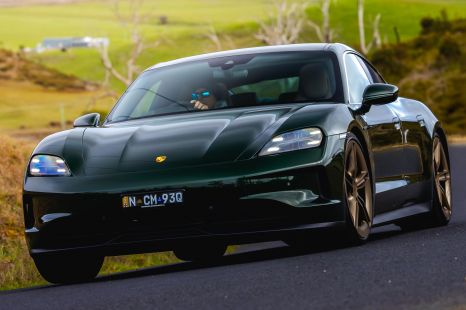

James Wong
2025 Porsche Taycan review
1 Year Ago
Subaru has retired the Levorg badge, and brought the WRX Sportswagon to life. How does it stack up compared to its sedan sibling?
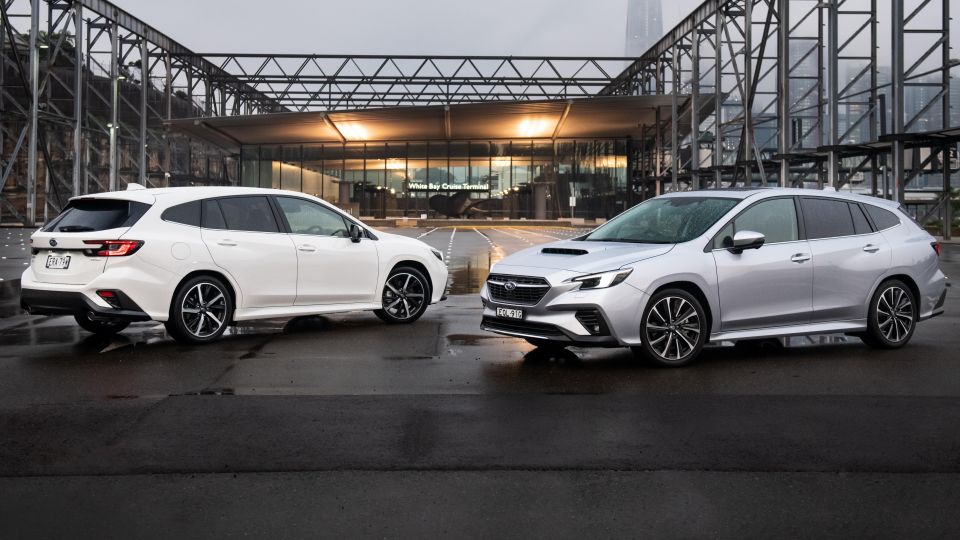
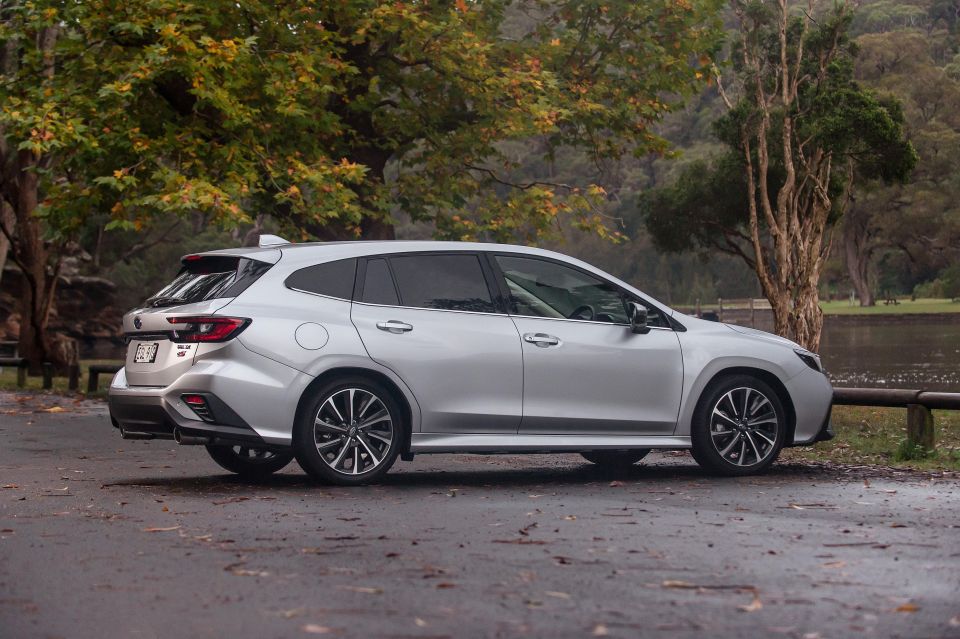

Quickly see how this car stacks up against its competition. Select any benchmark to see more details.
Where expert car reviews meet expert car buying – CarExpert gives you trusted advice, personalised service and real savings on your next new car.
Goodbye Levorg, hello WRX Sportswagon.
Subaru has done away with the short-lived (and largely unloved) Levorg name for Australia, but it hasn’t abandoned the idea of a performance-oriented wagon entirely.
Although the car you see here is called a Levorg in Japan, it’s being launched in Australia wearing the famous WRX name.

It shares its turbocharged engine and all-wheel drive system with the WRX sedan, is built on the same Subaru Global Platform, and features the same range of interior and technology options. It’s not quite identical, though.
Along with a small difference in wheelbase, the Sportswagon rides slightly higher than its sedan brother, and features skinnier tyres. It also isn’t offered with the same six-speed manual option as the sedan.
Is the new Sportswagon a WRX in name only, or can it deliver on the promise laid down by one of the most evocative badges in motoring?
Parts of this review are shared with that of the WRX sedan. To check that review out, click here.
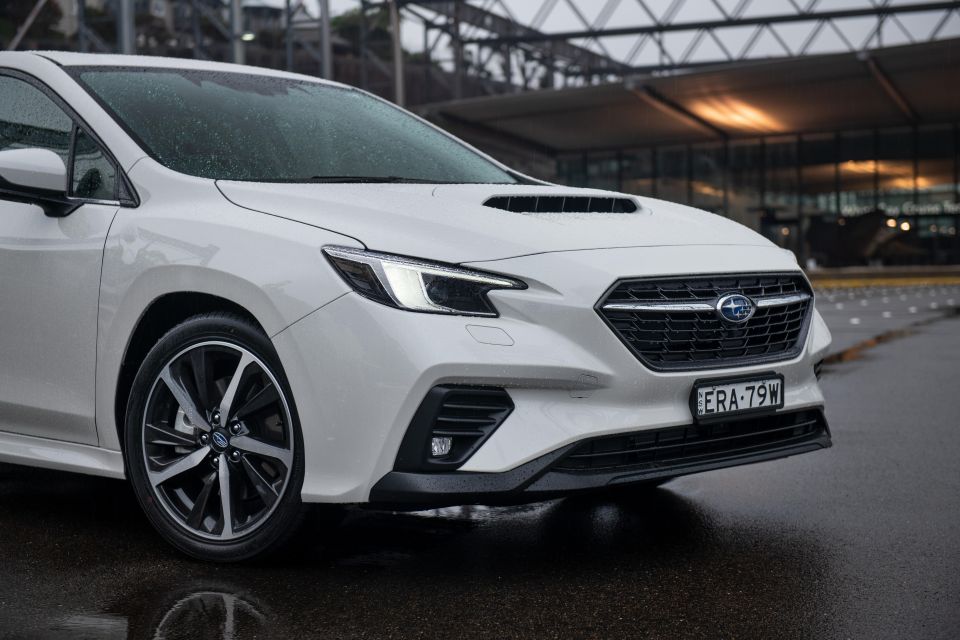
Pricing for the base WRX Sportswagon starts at $49,990 plus on-road costs.
With no manual option, the WRX Sportswagon has a $6000 higher starting price than the sedan. Spec-for-spec though, it’s just $1000 pricier.
There’s a dearth of small or mid-sized wagons on sale in Australia, but the Levorg aligns quite neatly with the Skoda Octavia RS Wagon.
It’s priced from $56,490 before on-roads in Australia, and offers similar performance claims.
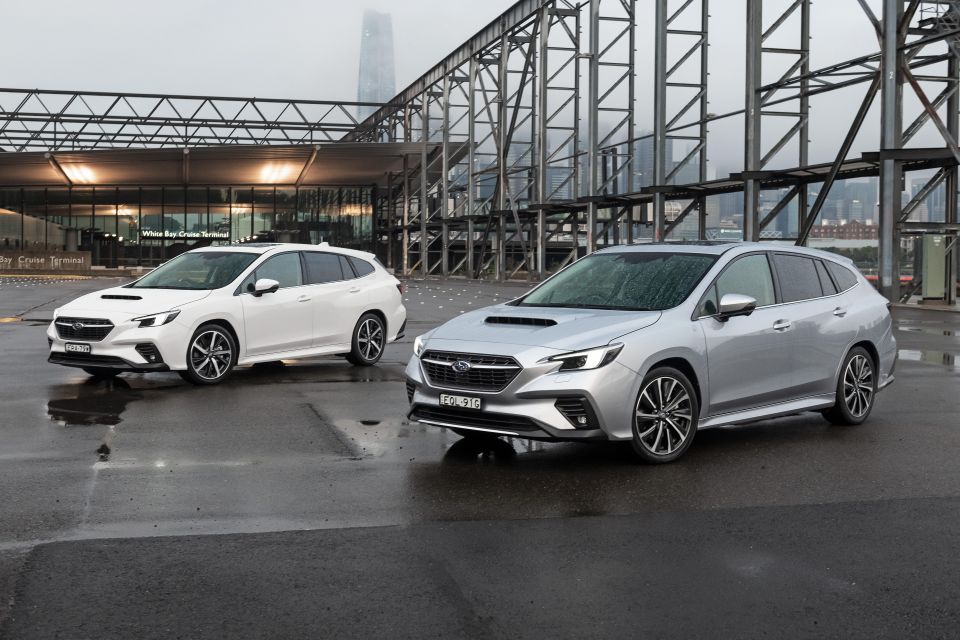
2022 Subaru WRX Sportswagon pricing:
All prices exclude on-road costs.
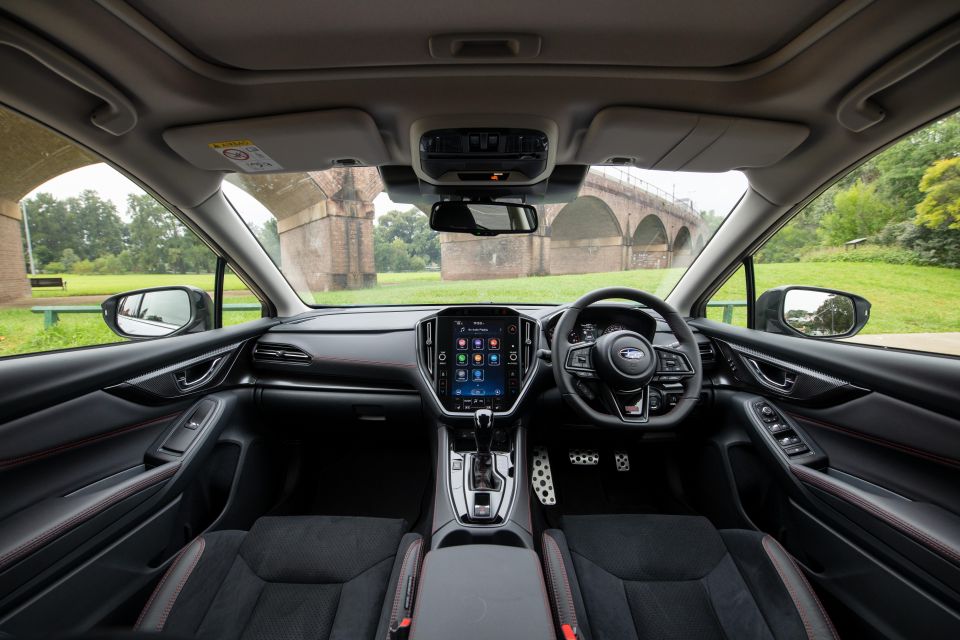
The big screen and basic dashboard design lean heavily on parts that’ll be familiar from elsewhere in the Subaru range, but the chunky steering wheel and sporty seats mean the WRX still feels sporty.
The driving position is excellent in cars with power-adjustable seats, with plenty of space for taller drivers. Subaru has done a nice job balancing of bolstering and long-haul comfort, given this is meant to be a more grown-up take on the WRX formula.
WRX or STI emblems (the latter of which are standard on the range-topper) and red stitching are on hand to lift the ambience, and you’re able to get a boost gauge atop the trip computer in place of the fuel economy readout that usually sits there.
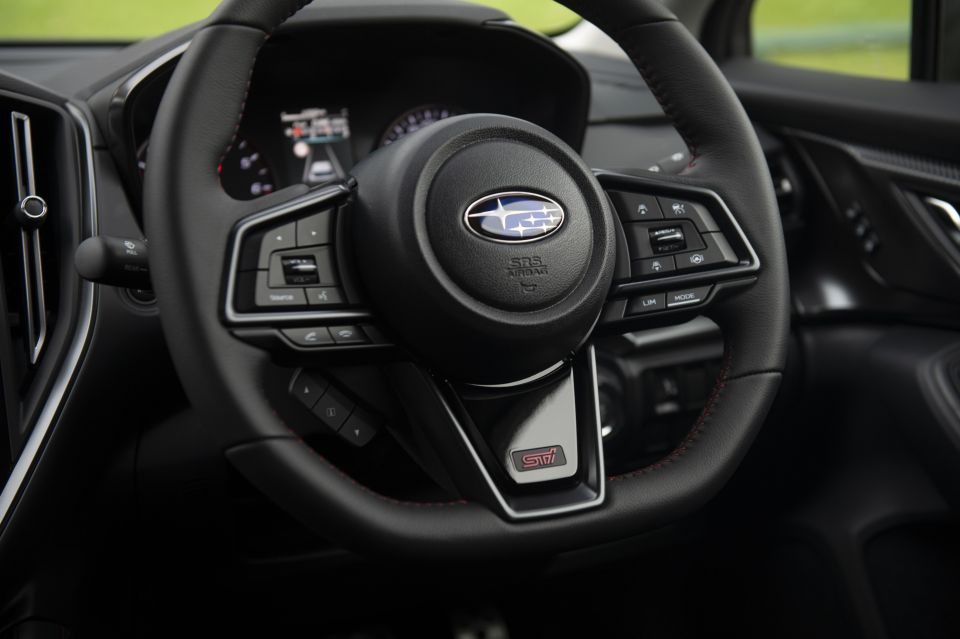
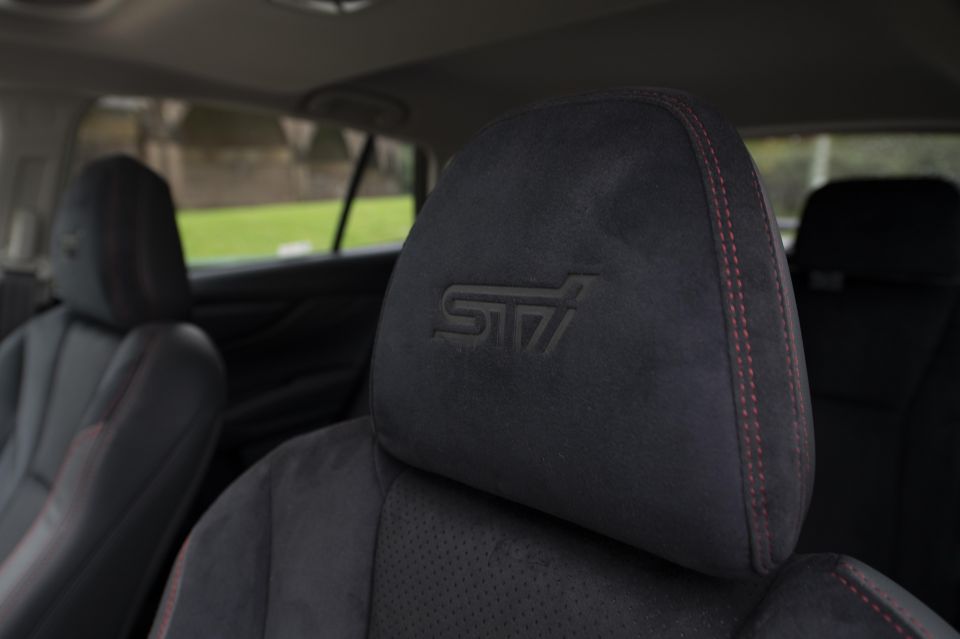
Subaru’s chunky flat-bottomed wheel feels good in your hands, and most of the things you need to poke and prod fall easily to hand. The inclusion of a drive mode button on the wheel means it’s easy to toggle from Comfort to Sport Sharp in the tS, although you can also do it through the infotainment system.
The vertically-oriented touchscreen takes care of your climate and media, and has swallowed the trip computer Subaru has traditionally situated atop the dashboard.
With sharp graphics and smooth responses, it manages to make moving away from buttons relatively painless. There are prominent shortcuts for commonly-used functions like fan speed, and the physical controls for the volume and temperature are a welcome touch.
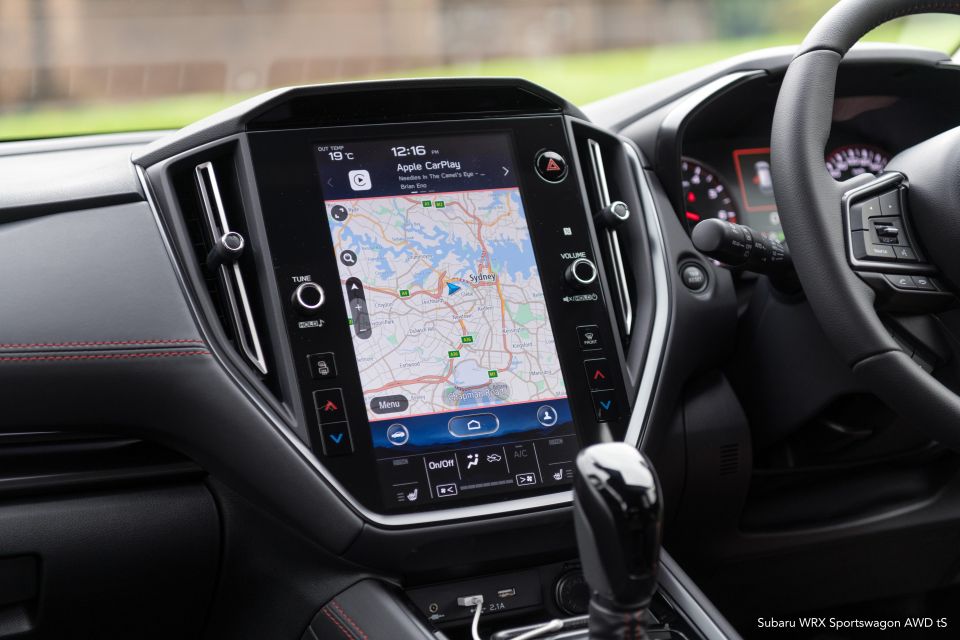
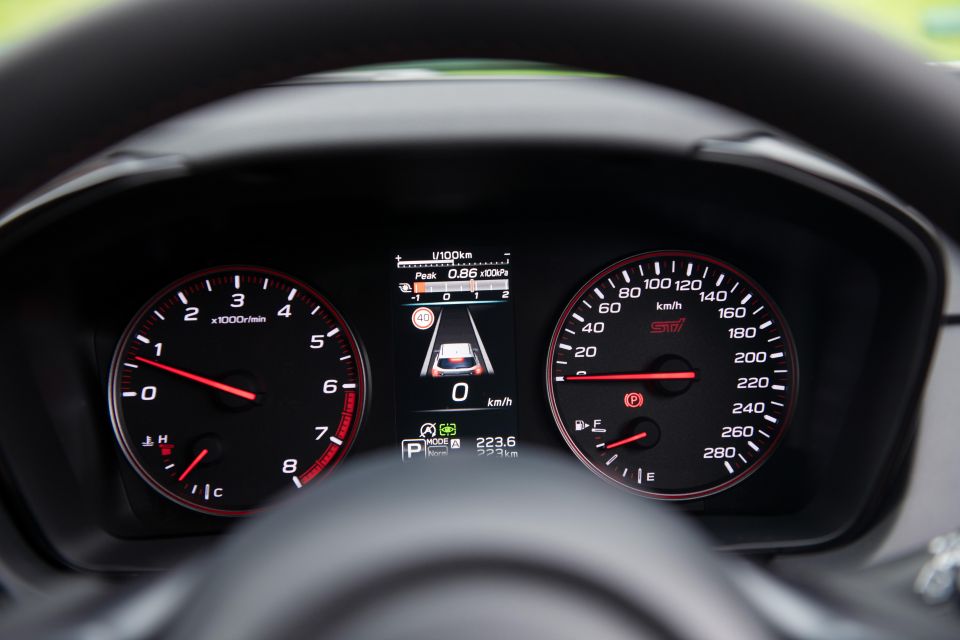
It’s a shame the driver monitoring system (which resets when you turn the car off) is buried in a sub-menu. It’s also a shame Subaru doesn’t offer wireless phone charging, or wireless smartphone mirroring for that matter.
The inbuilt navigation supplied by TomTom has live traffic updates, and is handy if you’re touring in areas with no mobile reception, but Google or Apple Maps are always preferable.
Storage space up front is decent. There’s a space beneath the touchscreen, big cupholders, a shelf ahead of the central armrest, and decent door bins, along with the glovebox.
Rear seat space puts that of the sedan in the shade, as you’d expect. Legroom is similar in the two cars, but the Sportswagon has more headroom back there, and top-spec cars feature dual USB ports back there along with the standard air vents.
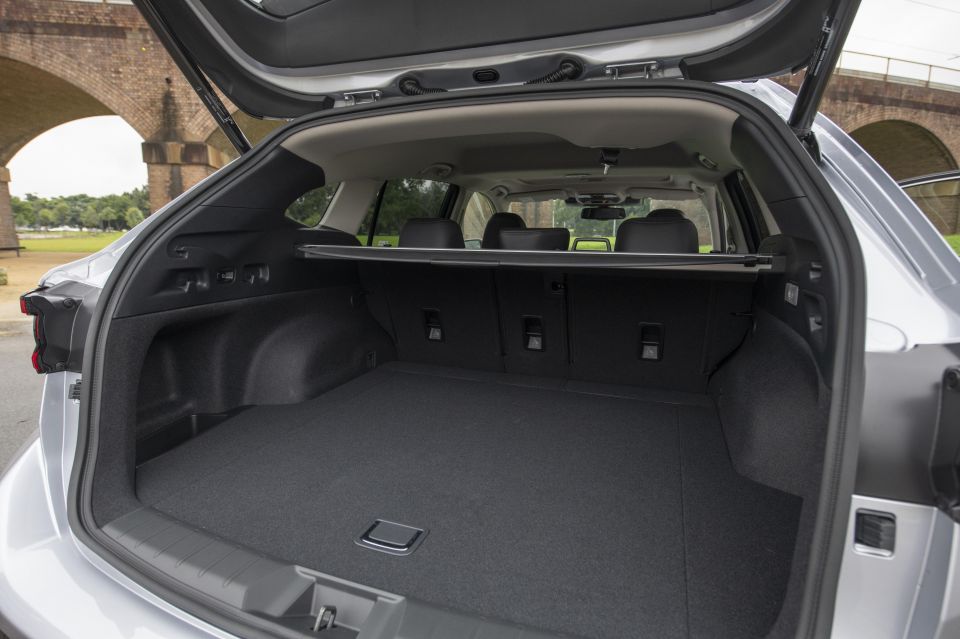
It’s not quite Skoda Octavia spacious back there, but it has more than enough space for young families, and you’ll be able to happily carry around regular-sized adults.
The backrest folds 40/20/40, and there’s a trio of top-tether mounts for child seats along with the outboard ISOFIX points.
Boot space is a claimed 492 litres with the rear seats in place, expanding to 1430 litres with them folded.
The WRX Sportswagon is sold as a Levorg elsewhere in the world, and is actually 85mm longer than the sedan, so it’s not quite a throwback to the days of WRX hatches developed directly off the base of the sedan.
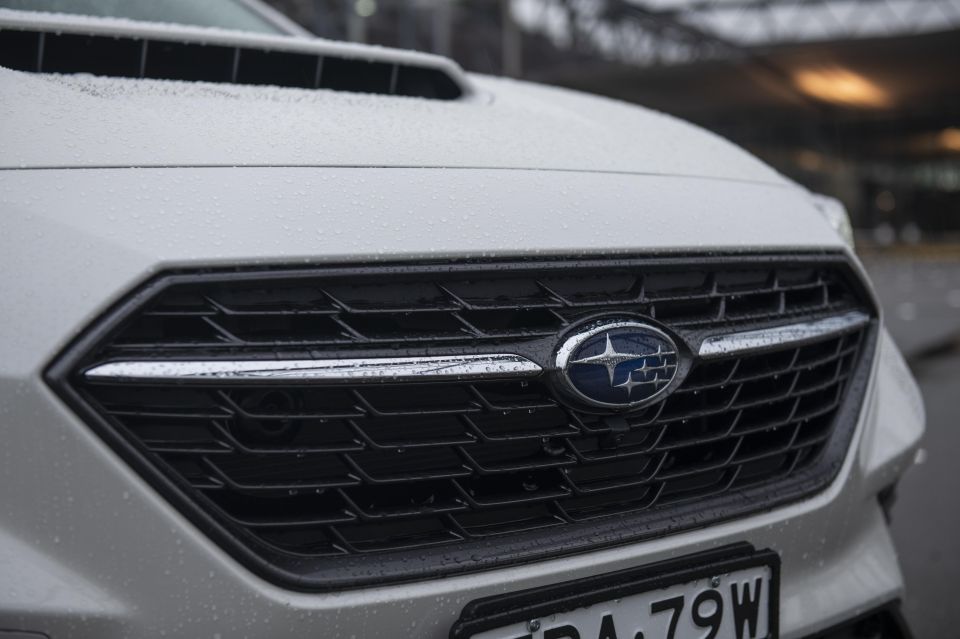
Power for the 2022 WRX range comes from 2.4-litre turbocharged four-cylinder Boxer engine producing 202kW of power. That’s up 400cc and 5kW from the engine available in the previous WRX and Levorg.
Peak torque remains unchanged at 350Nm, but it comes on song between 2000 and 5200rpm, which means it’s available 400rpm earlier and hangs around 200rpm longer.
Claimed fuel economy is 8.5 litres per 100km.
Buyers have a choice between a six-speed manual or CVT automatic transmission in the sedan; wagons are only offered with the CVT.
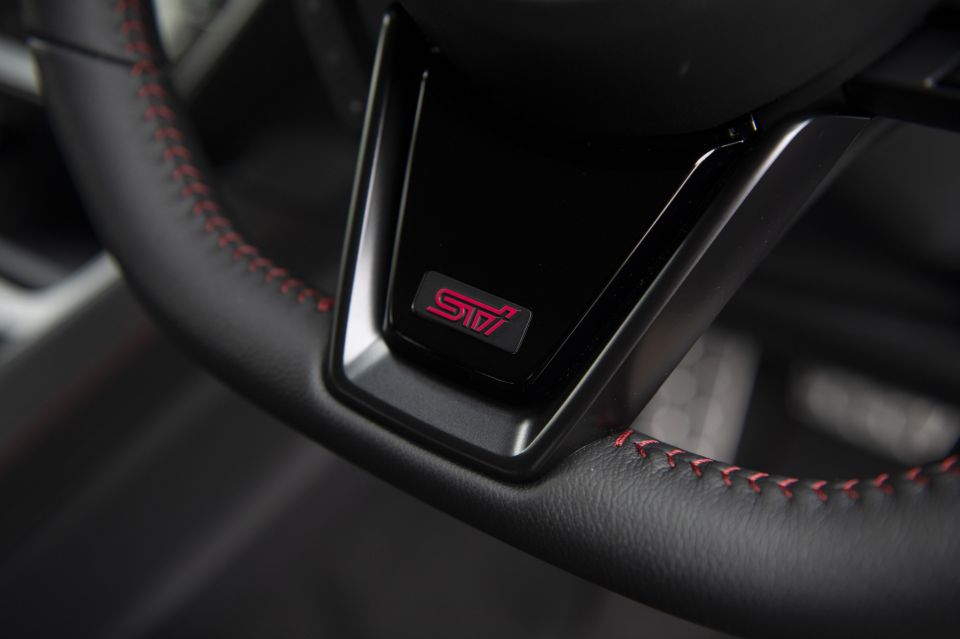
Subaru says the engine’s bigger displacement combined with a new turbo packing an electronically-controlled waste gate and air bypass valves deliver more mid-range performance with less turbo lag.
Though the WRX is unusual in being a performance vehicle with a CVT, Subaru has programmed eight “steps” you can toggle between using the paddle shifters.
Subaru says this CVT allows for faster ‘gear changes’ than before, and there’s also a downshift blipping control. This will be the only transmission available on the wagon.
Power is sent to all four wheels through a variable all-wheel drive system. It defaults to a 45/55 front/rear torque split, and in tS models can be set into a more aggressive Sport mode that limits the amount of torque shuffled forward.
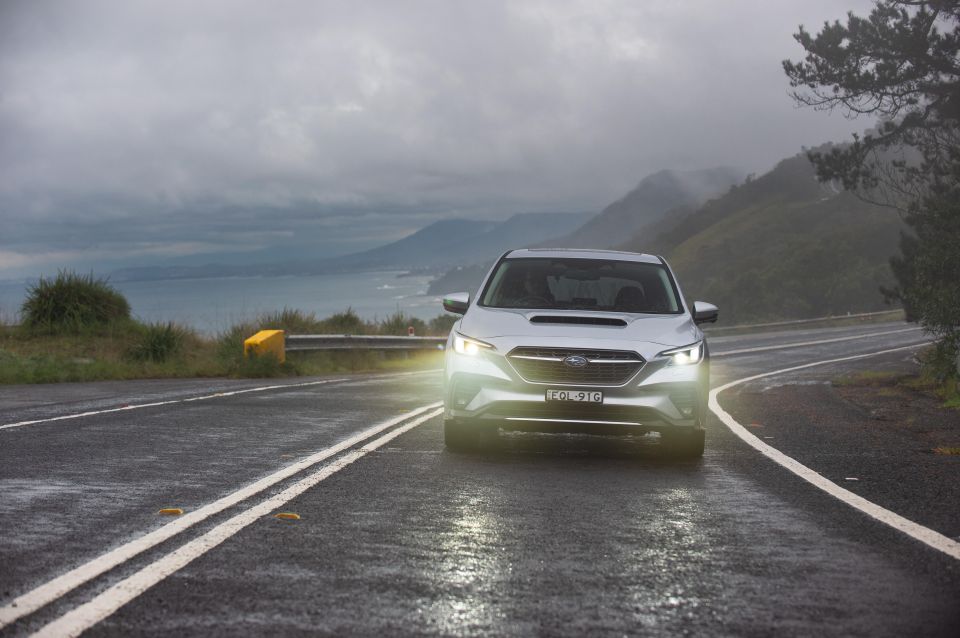
Yes, it wears a WRX badge. Yes, it looks like the sedan from the front. No, this isn’t just a WRX sedan in drag.
Not only does the Sportswagon ride on a different wheelbase to the sedan, its track is 10mm narrower at the front and 25mm narrower at the rear.
Passively-sprung cars have unique, more comfort-oriented spring and damper tunes than those of the sedan, and the Sportswagon rides on 225/45 tyres with a focus on quiet, efficient motoring in place of the sticky 245/40 tyres fitted to the sedan.
That’s not to say they’re completely different cars. Like the sedan, the WRX Sportswagon is powered by a 2.4-litre turbocharged engine that offers plenty of shove in a straight line.
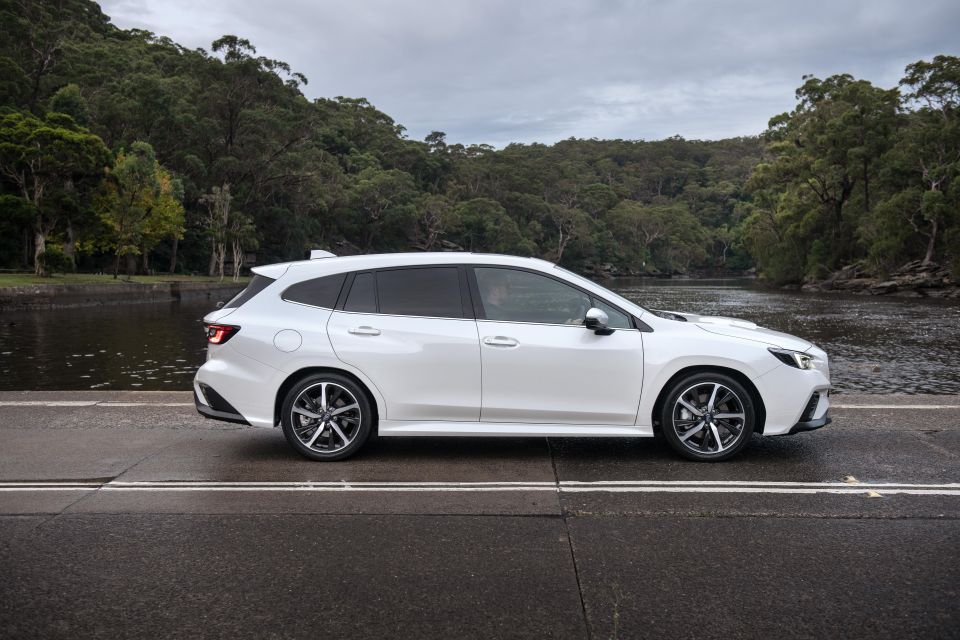
There’s no manual option, but don’t write off the CVT – or Subaru Performance Transmission, as the brand likes to call it.
It’s smooth and quiet on light throttle inputs, slurring through its eight virtual gear ratios to avoid the unnatural feeling present in some CVT models.
Flicked into Sport Sharp, it does an impressively convincing impression of an automatic transmission.
Not only does it run through the rev range to redline and make fake upshifts, it’ll actually downshift when you lean hard on the brake pedal to keep the engine in its torque band. You’re never going to confuse it for a dual-clutch, but it’s the most convincing CVT I’ve experienced in a performance car.

Coupled with adaptive dampers in the range-topping tS, the transmission makes this a pretty versatile all-rounder.
Comfort mode for the suspension is perfect for long highway stints, and is noticeably more relaxed than the ride in passively-sprung models. Flicked into Normal it strikes a decent balance between sportiness and pliancy; in its raciest mode it’s probably too firm for daily driving, but offers impressive body control.
It feels more closely linked to the sedan with adaptive dampers, and can be pushed harder than the mid-range GT thanks to its better body control and flatter ride.
In passively-sprung cars, though, the WRX Sportswagon’s focus on comfort is more evident. On twisty, undulating country roads it lacks the iron-clad body control of its sedan sibling, floating over crests and taking one, two, three movements to settle down.
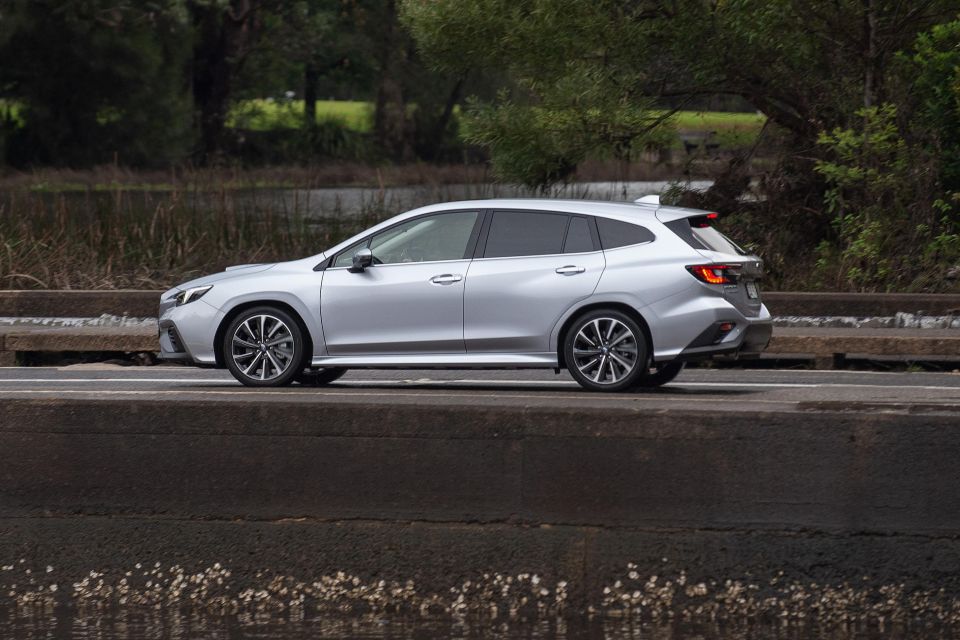
Where expert car reviews meet expert car buying – CarExpert gives you trusted advice, personalised service and real savings on your next new car.
There’s noticeably more body roll, and the skinnier tyres don’t offer the same tenacious front-end grip you get from the Dunlop rubber on the sedan. It can still be hustled along, but it’s a car that’s happier at 80 or 90 per cent speed.
That’s fine if you’re looking for a comfortable, practical family car with plenty of punch, but it might disappoint buyers who want a full-on WRX with more space for bikes. It feels more like a modern take on the fourth-generation Liberty.
The upside of that? The WRX Sportswagon is a really nice place to spend time on the highway. It’s more relaxed than the mid-spec sedan, with a languid character that makes it perfect for long stints behind the wheel, or for the school run.
It also represents a huge step forward from the last Levorg, which had a hopelessly unresolved suspension setup.
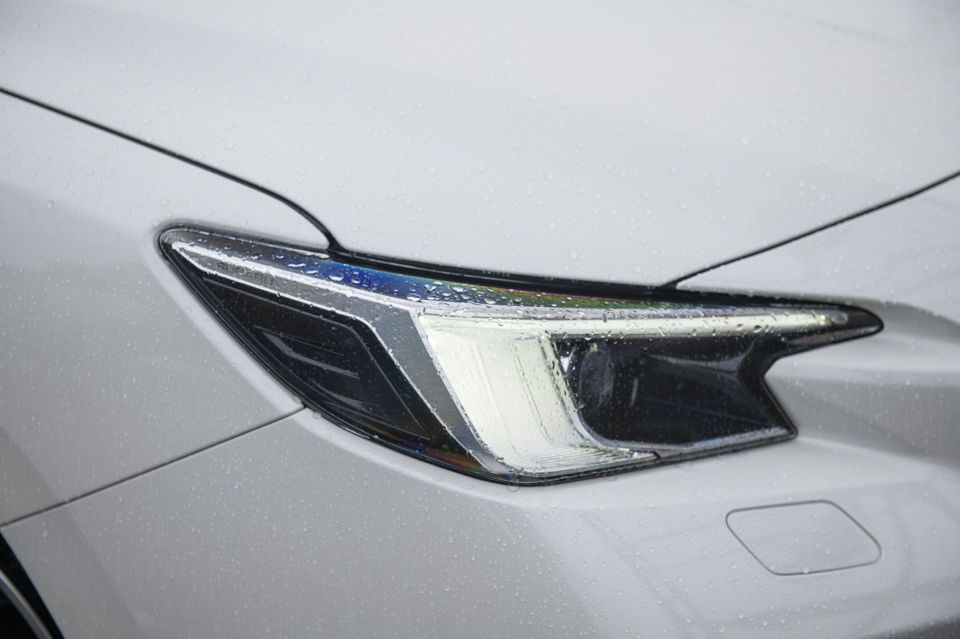
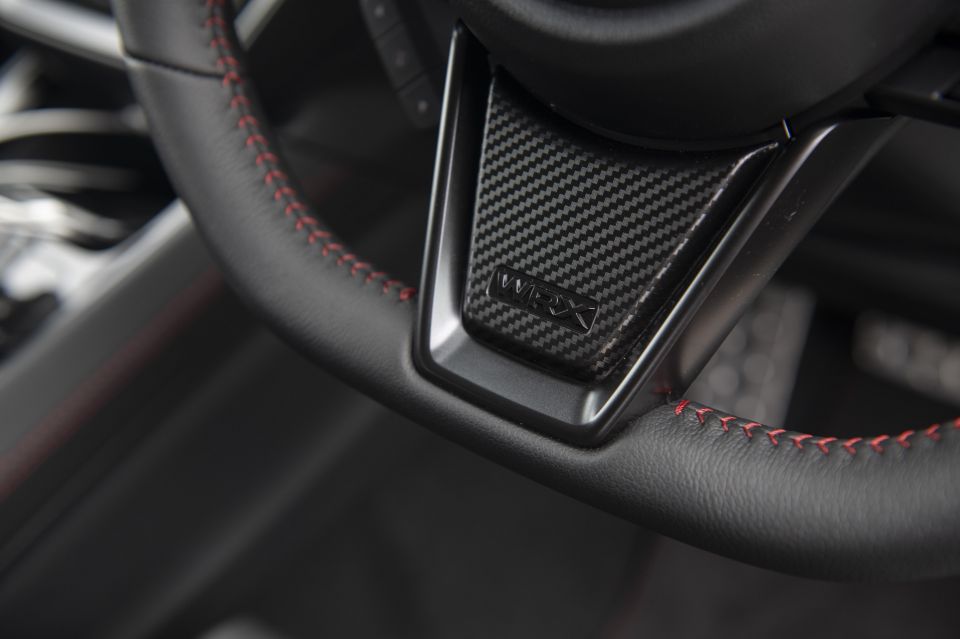
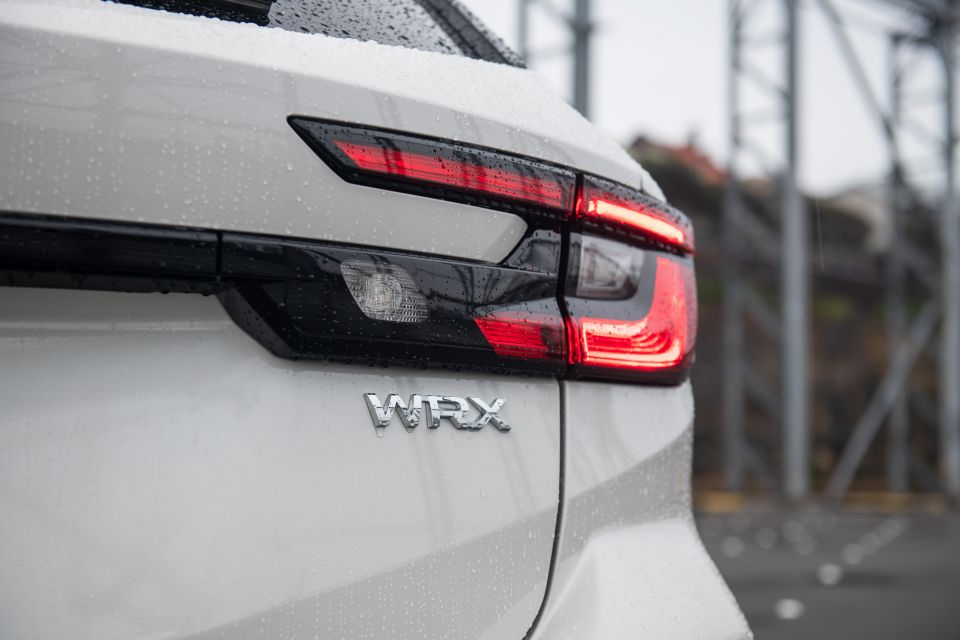
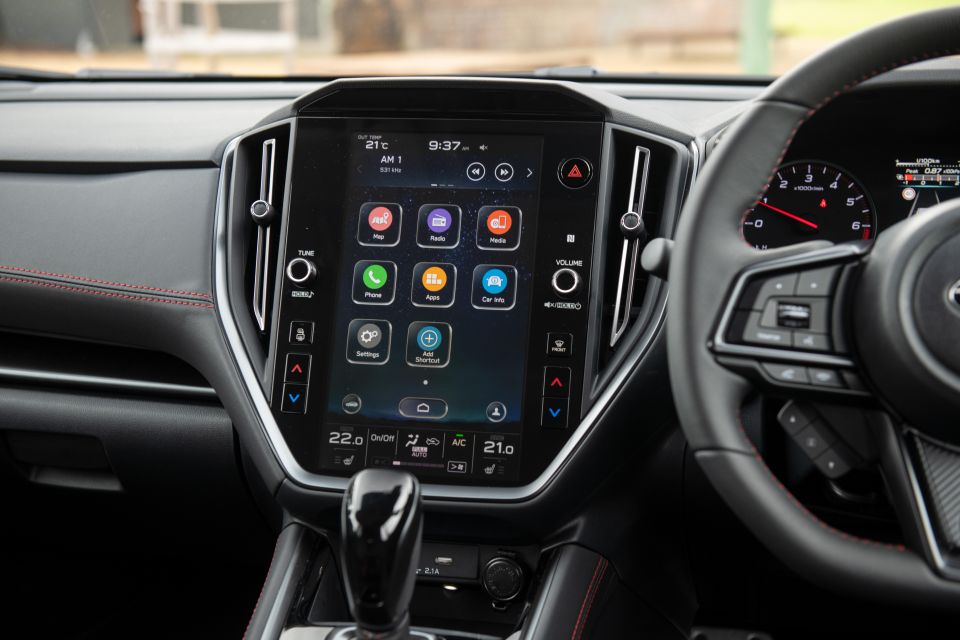
Standard equipment on the base WRX includes:
The base Sportswagon adds:


WRX GT models add:
WRX tS models gain:

The Subaru WRX has yet to be tested by ANCAP.
All WRX models come standard with:
The RS sedan adds driver attention monitoring
All WRX CVT models include:

All WRX models are backed by a five-year, unlimited-kilometre warranty.
Maintenance is required every 12 months or 15,000km.
The first five services for CVT models will set you back $2365.74 under Subaru’s capped-price service plan.
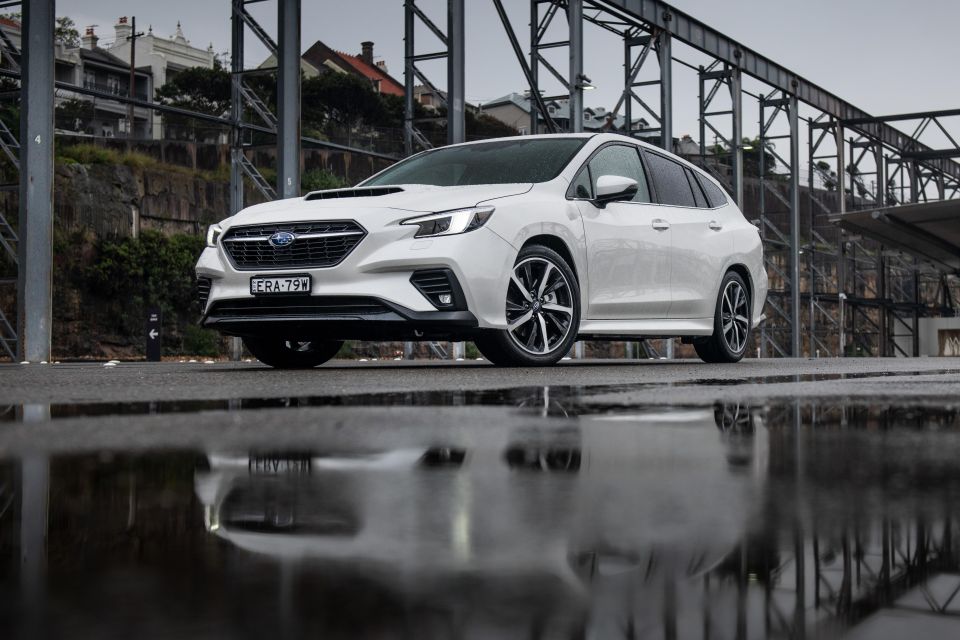
The WRX Sportswagon takes a big step from the underdone Levorg.
Not only is it better looking and better equipped, even the mid-range model on its passive dampers balances sportiness and comfort better.
Don’t be misled by the WRX badge, though. A back-to-back with the sedan reveals the two cars share most of their bones, but have distinctly different characters.

Where the mid-range WRX sedan on passive dampers is overtly sporty, the Sportswagon has a softer suspension tune that will make the family happy, but won’t put as much of a smile on your face when the road gets interesting.
It almost feels more like a successor to the much-loved Liberty B4 than a WRX, especially given the lack of manual option and how quiet the engine is.
Our pick based on the launch drive is the range-topping tS, largely because of its impressive adaptive dampers. So equipped, it makes for an impressive rival to the Skoda Octavia RS.
A proper WRX wagon, though? Depends which model you’re talking about, and what your expectations are.
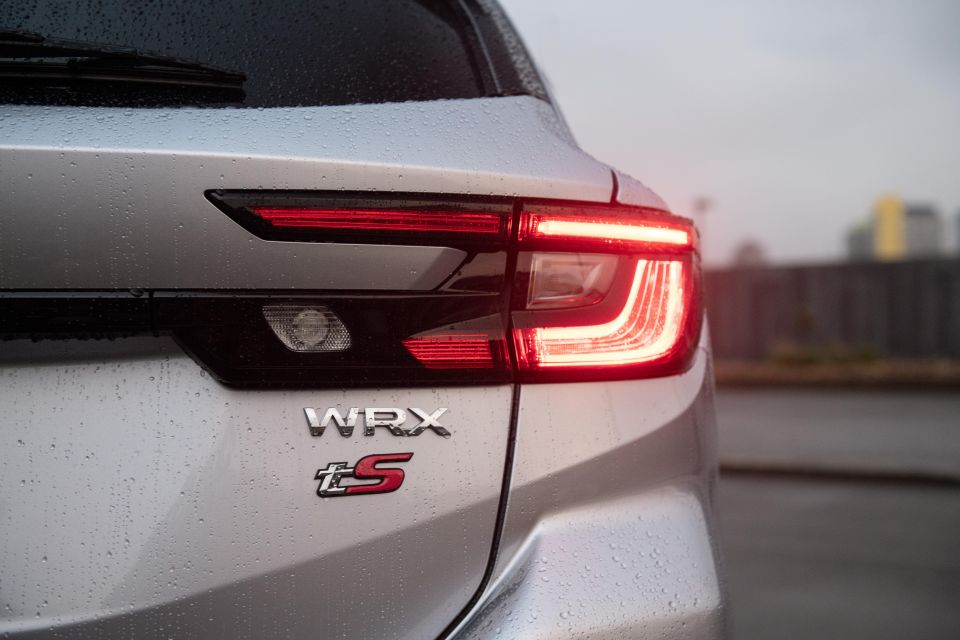
MORE: Everything Subaru WRX
Where expert car reviews meet expert car buying – CarExpert gives you trusted advice, personalised service and real savings on your next new car.
Scott Collie is an automotive journalist based in Melbourne, Australia. Scott studied journalism at RMIT University and, after a lifelong obsession with everything automotive, started covering the car industry shortly afterwards. He has a passion for travel, and is an avid Melbourne Demons supporter.


James Wong
1 Year Ago
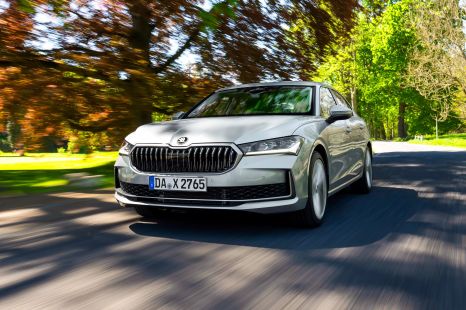

Matt Campbell
1 Year Ago
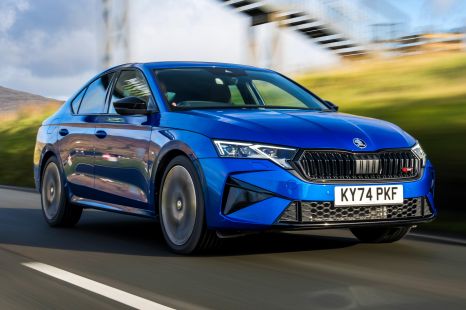

Matt Robinson
9 Months Ago


Matt Campbell
8 Months Ago
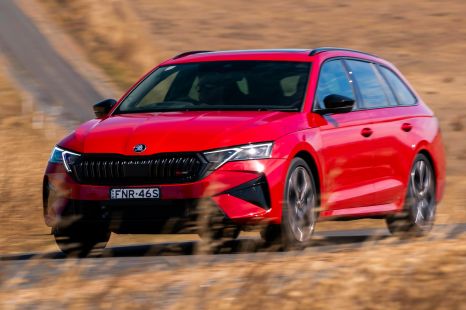

Josh Nevett
5 Months Ago
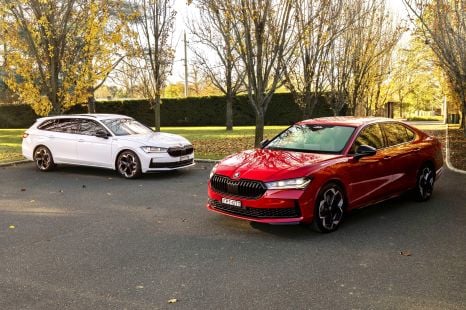

Max Davies
2 Months Ago